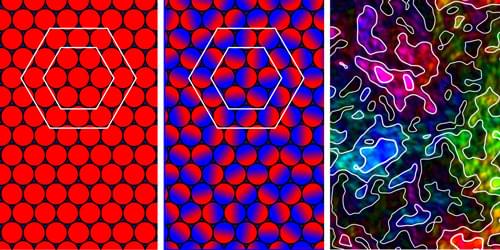Active particles can form two-dimensional solids that are different from those formed by nonmotile particles, showing long-range crystalline order accompanied by giant spontaneous deformations.
If you compress a liquid slowly enough at low temperatures, it will freeze into an ordered solid: a crystal. Or at least that’s what we’re used to seeing in three dimensions. If you instead consider particles confined to a two-dimensional (2D) plane, the outcome is quite different. For equilibrium systems, a 2D solid stabilizes into a structure that lacks long-range order—it becomes less ordered further away from a central lattice site. The behavior of systems far from equilibrium, such as self-propelled particles, remains, however, an open question. In a numerical study of bacteria-like particles, Xia-qing Shi of Soochow University in China and his colleagues now show that active crystals follow a slightly different set of rules than their nonmotile counterparts [1]. Like 2D equilibrium crystals, 2D active systems stabilize into an ordered solid-like phase but with extremely large particle fluctuations around the configuration of a perfect crystal lattice.
